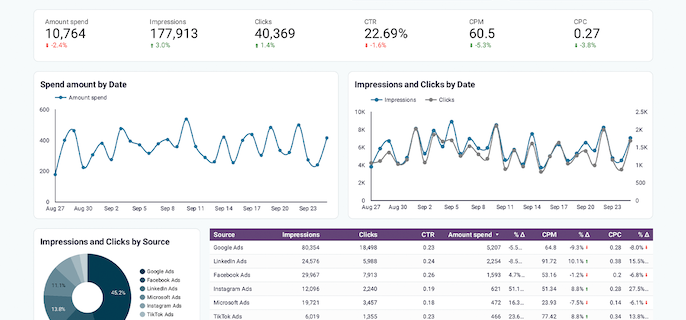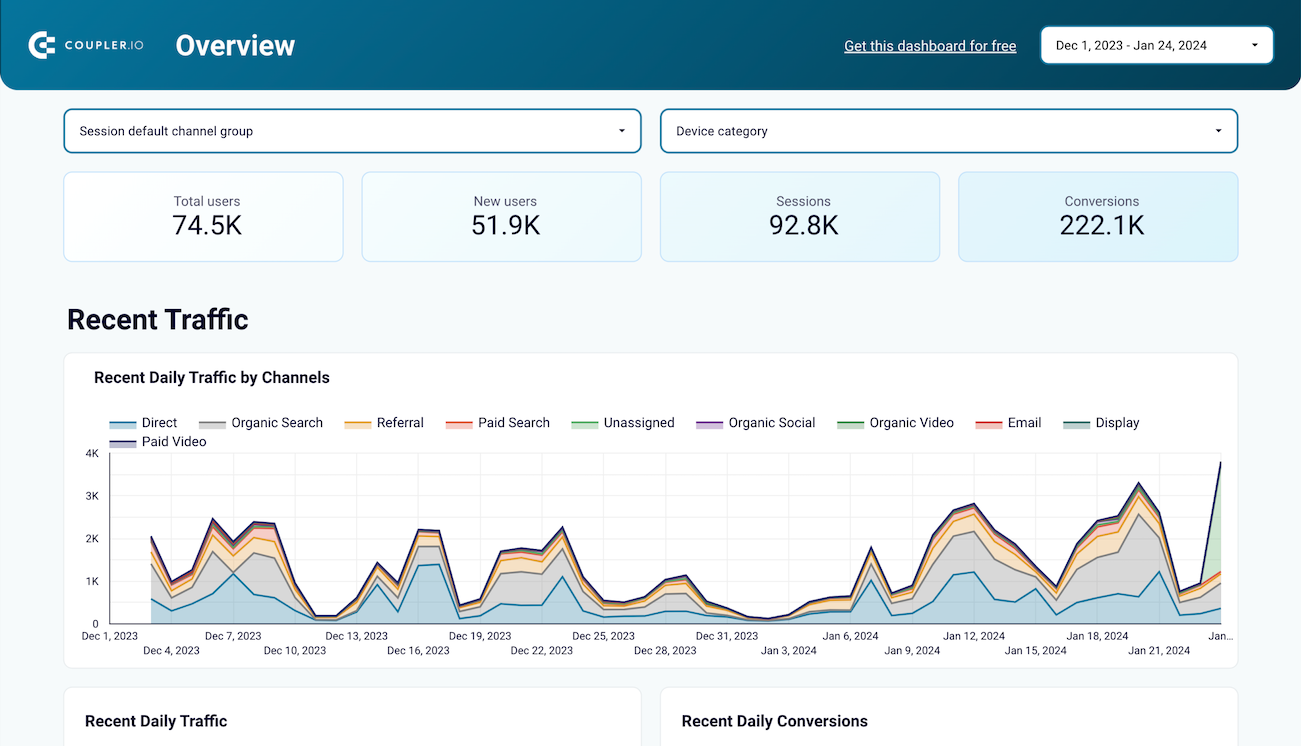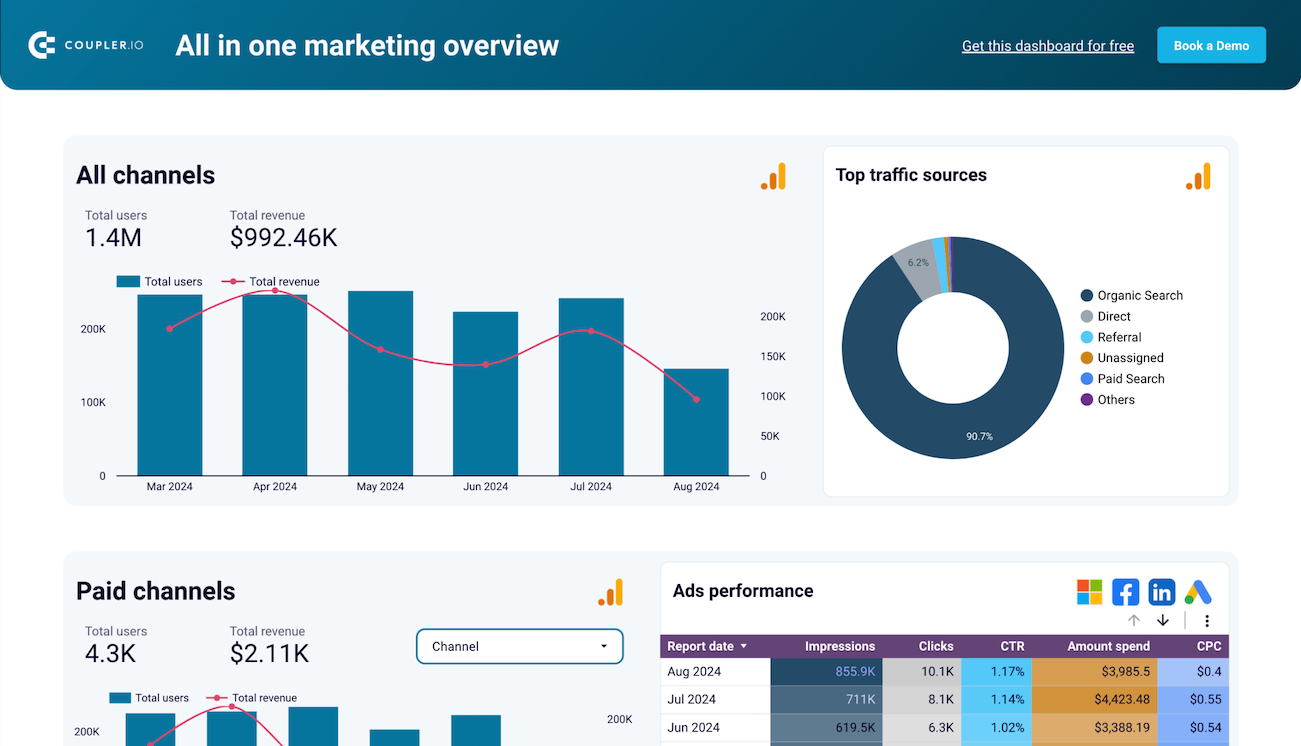What is a ROI?
Return on Investment (ROI) is a crucial metric that measures the profitability of your marketing campaigns. It calculates how much profit you earn from each dollar spent. ROI is an important metric because it directly reflects the success of your marketing efforts. A high ROI means your campaigns generate more revenue compared to their cost. This is an indicator of the effective use of your marketing budget. Analyzing ROI helps marketers identify which strategies deliver the best returns. As a result, they can allocate resources more efficiently. Marketers focus on improving ROI to ensure their campaigns are cost-effective and contribute to the company's bottom line.
How to calculate ROI?
To calculate return on investment (ROI), subtract the initial value of the investment from the final value. Then divide the result by the initial investment cost and multiply by 100.


Our key templates to track ROI

Get a comprehensive PPC reporting tool to track the performance of your campaigns launched at multiple advertising platforms.










Use the insights based on the data from GA4 to monitor your website traffic and discover which pages resonate most with your audience.




Monitor all your marketing channels with an all-in-one dashboard providing performance overviews of web analytics, ad campaigns, SEO, social media, and emails.













How to improve ROI?








